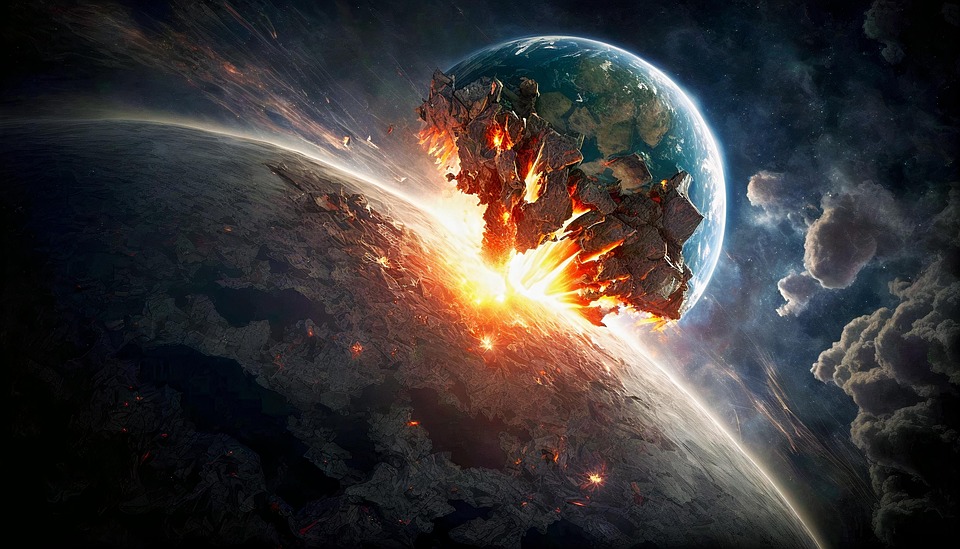The interaction between terrestrial ecosystems and celestial phenomena has been a subject of considerable scholarly inquiry. Among the myriad of potential agents capable of inducing profound alterations to our planet’s atmosphere, asteroids represent a particularly formidable force. One of the most pressing concerns tied to asteroid impacts is the potential disruption of the ozone layer, a critical component of Earth’s atmospheric defenses. The implications of an asteroid crash extend far beyond mere geological disturbances; they possess the capability to unravel conditions vital for life as we know it. This discourse seeks to elucidate the dynamics of asteroids as agents of atmospheric change, particularly their interaction with ozone.
To comprehend the potential threat posed by an asteroid impact, one must first appreciate the role of the ozone layer. Positioned within the stratosphere, the ozone layer absorbs the majority of the Sun’s harmful ultraviolet (UV) radiation, shielding terrestrial and marine ecosystems from its deleterious effects. A compromised ozone layer could lead to increased UV exposure, precipitating a cascade of ecological repercussions, including heightened skin cancer rates in humans, harm to aquatic life, and disruptions in terrestrial agriculture.
Asteroids, remnants from the solar system’s formation, traverse orbits that at times intersect with Earth’s path. The energy released during an asteroid impact is directly proportional to the mass and velocity of the asteroid. Upon collision, kinetic energy is converted into heat, leading to localized combustion and atmospheric shockwaves that can significantly alter atmospheric chemistry. Particularly alarming is the capacity of large asteroid impacts to initiate wildfires, which can subsequently release substantial amounts of particulates and sulfur compounds into the atmosphere, potentially influencing the ozone layer adversely.
The phenomenon of ozone depletion due to particulate emissions is well-documented. Specifically, the injection of various aerosols into the stratosphere catalyzes a series of complex reactions that result in the breakdown of ozone molecules. For instance, wildfire smoke, enriched with carbonaceous particles, has been shown to have a deleterious effect on ozone concentrations. This correlation between particulate matter and ozone depletion underscores the necessity for comprehending the consequences of an asteroid-induced impact event.
Consider, for illustrative purposes, the mass extinction event attributed to the Chicxulub impactor roughly 66 million years ago. This collision marked a turning point in Earth’s biological history as it eliminated approximately 75% of all species, including the non-avian dinosaurs. The environmental aftermath was catastrophic; dust and soot obscured solar radiation, effectively plunging the planet into a protracted period of darkness. This climatic shift resulted in a significant decline in photosynthetic organisms, further disrupting the food chain. In such a scenario, the ozone layer would have also been disrupted, leading to possible long-term repercussions on the planet’s habitability.
Another dimension to consider is the potential for secondary effects following an asteroid impact. The interaction of intense heat and energy with Earth’s biosphere may produce gases such as nitrogen oxides and chlorine compounds. Both of these agents have been shown to catalyze ozone depletion through various mechanisms. The production of nitrogen oxides during high-temperature events can lead to ozone depletion through a series of photochemical reactions, which become particularly pronounced in the aftermath of an impact.
Aside from ozone depletion, the atmospheric aftermath of an asteroid strike could give rise to phenomena such as acid rain, exacerbating environmental degradation. The release of sulfur dioxide and nitrogen oxides into the atmosphere may result in the formation of sulfuric and nitric acids, which pose substantial risks to terrestrial ecosystems. The interplay between acid rain and ecological health further complicates the narrative; aquatic systems, soil chemistry, and plant health can all be adversely affected, cumulatively leading to disruptions in biodiversity.
The fascination with asteroids as harbingers of potential atmospheric catastrophe is driven by the realization that these cosmic entities are not merely relics of the past. Rather, they remain active participants in the ongoing narrative of Earth’s ecological evolution. Asteroids intersect our existence with alarming frequency, necessitating a robust understanding of their trajectories and potential impacts. The dialogue surrounding asteroid impacts is not solely speculative; it emphasizes the interconnectedness of cosmic and terrestrial processes.
In contemplating the future, the imperative emerges for enhanced monitoring and preparedness regarding near-Earth objects (NEOs). Whether through debris mitigation technologies or advanced detection systems, the capacity to predict and potentially forestall catastrophic impacts is paramount. Understanding the ramifications of an asteroid impact on ozone layers and broader atmospheric conditions will serve as an essential component of planetary defense strategies.
The interplay between asteroids and atmospheric integrity encapsulates a complex web of geological, ecological, and astronomical dynamics. As interdisciplinary studies evolve, integrating astrophysics with atmospheric science, the hope is to forge a more nuanced understanding of how celestial events shape planetary conditions. Asteroids may just be the catalysts of change we need to study, lest they become the agents of our vulnerability in the ever-changing landscape of our skies.












